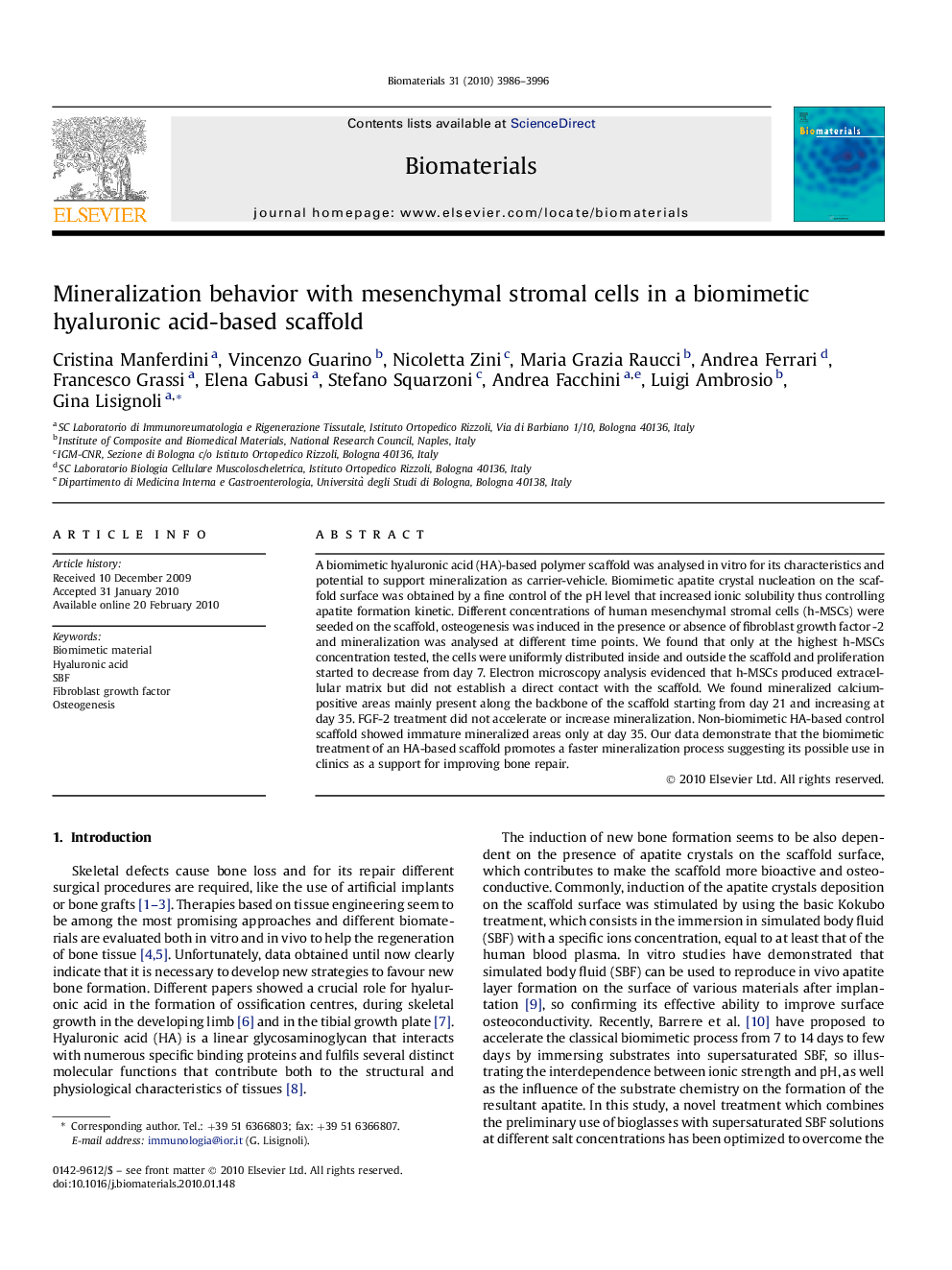| Article ID | Journal | Published Year | Pages | File Type |
|---|---|---|---|---|
| 9105 | Biomaterials | 2010 | 11 Pages |
A biomimetic hyaluronic acid (HA)-based polymer scaffold was analysed in vitro for its characteristics and potential to support mineralization as carrier-vehicle. Biomimetic apatite crystal nucleation on the scaffold surface was obtained by a fine control of the pH level that increased ionic solubility thus controlling apatite formation kinetic. Different concentrations of human mesenchymal stromal cells (h-MSCs) were seeded on the scaffold, osteogenesis was induced in the presence or absence of fibroblast growth factor -2 and mineralization was analysed at different time points. We found that only at the highest h-MSCs concentration tested, the cells were uniformly distributed inside and outside the scaffold and proliferation started to decrease from day 7. Electron microscopy analysis evidenced that h-MSCs produced extracellular matrix but did not establish a direct contact with the scaffold. We found mineralized calcium-positive areas mainly present along the backbone of the scaffold starting from day 21 and increasing at day 35. FGF-2 treatment did not accelerate or increase mineralization. Non-biomimetic HA-based control scaffold showed immature mineralized areas only at day 35. Our data demonstrate that the biomimetic treatment of an HA-based scaffold promotes a faster mineralization process suggesting its possible use in clinics as a support for improving bone repair.
